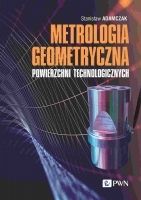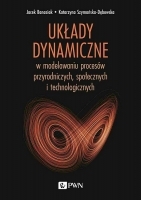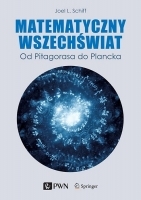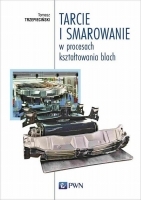FEM burnishing simulation including roughness
Symulacja procesu nagniatania metodą elementów skończonych z uwzględnieniem chropowatości powierzchni
Mechanik nr 02/2015 - Artykuły z Międzynarodowej Konferencji Innovative Manufacturing Technology IMT 2014 zamieszczone na płycie CD
ABSTRACT: Ball burnishing is a surface improvement process that provides compressive residual stresses and increment the hardness in the surface layer of workpieces. Actually, in the state of the art some papers use FEM to simulate the burnishing process in the most cases without consideration the roughness of the workpiece, in other cases the roughness is considered only as two-dimensional semicircular or triangular periodic pattern. In other studies to simulate three-dimensional roughness, the two dimensional case is extruded. In this paper, a new way to simulate three-dimensional random roughness was used to simulate the ball burnishing process obtaining the final roughness and residual stresses distribution in the surface and below it. For the simulation, a commercial explicit FEA Software was used considering a bilinear material model. The finite element model of ball burnishing process was validated with experimental test and the methodology of this simulation process is presented.
KEYWORDS: burnishing, surface roughness, FEM simulation.
STRESZCZENIE: Nagniatanie jest procesem stosowanym w celu poprawy powierzchni, który zapewnia ściskające naprężenia szczątkowe i wzrost twardości w warstwie wierzchniej przedmiotów obrabianych. Według aktualnego stanu wiedzy w kilku przypadkach do symulacji procesu nagniatania używano MES, jednakże w większości przypadków nie uwzględniono chropowatości powierzchni przedmiotu obrabianego, a w innych chropowatość była traktowana jako dwuwymiarowy powtarzalny kształt półokrągły lub trójkątny. W innych badaniach, do symulacji chropowatości trójwymiarowej użyto modelu powstałego przez wyciągnięcie przypadku dwuwymiarowego. W niniejszej pracy użyto nowego sposobu symulacji stochastycznej chropowatości 3D do symulacji procesu nagniatania uzyskując końcową chropowatość powierzchni i końcowy rozkład naprężeń szczątkowych na powierzchni i pod nią. Do symulacji użyto komercyjnego oprogramowania MES z jawnym całkowaniem równań ruchu z uwzględnieniem dwuliniowego modelu materiału. Model procesu nagniatania otrzymany metodą elementów skończonych został potwierdzony badaniami eksperymentalnymi. Metodologia procesu symulacji została przedstawiona w artykule.
SŁOWA KLUCZOWE: nagniatanie, chropowatość powierzchni, symulacja MES.
BIBLIOGRAFIA / BIBLIOGRAPHY:
- BOUGHARRIOU A., SAÏ K., BOUZID W.: Finite element modeling of burnishing process, Materials Technology: Advanced Performance Materials, 2010a, 25(1), 56-67.
- HASSAN A. M., MAQABLEH A. M.: The effects of initial burnishing parameters on non-ferrous components, Journal of Materials Processing Technology, 2000, 102(1), 115-121.
- RODRÍGUEZ A., LÓPEZ DE LACALLE L. N., CELAYA A., LAMIKIZ A., ALBIZURI, J.: Surface improvement of shafts by the deep ball-burnishing technique. Surface and Coatings Technology, 2012, 206(11), 2817-2824.
- EL-TAYEB N. S. M., LOW K. O., BREVERN P. V.: Influence of roller burnishing contact width and burnishing orientation on surface quality and tribological behavior of Aluminum 6061, Journal of materials processing technology, 2007, 186(1), 272-278.
- HAMADACHE H., LAOUAR L., ZEGHIB N. E., CHAOUI K.: Characteristics of Rb40 steel superficial layer under ball and roller burnishing, Journal of Materials Processing Technology, 2006, 180(1), 130-136.
- YEN Y. C., SARTKULVANICH P., ALTAN T.: Finite element modeling of roller burnishing process, CIRP Annals-Manufacturing Technology, 2005, 54(1), 237-240.
- KLOCKE F., BÄCKER V., WEGNER H., ZIMMERMANN M.: Finite element analysis of the roller burnishing process for fatigue resistance increase of engine components, Proceedings of the Institution of Mechanical Engineers, Part B: Journal of Engineering Manufacture, 2011, 225(1), 2-11.
- MAHMOOD H. A., AL-DHIFI S. Z.: Improvement in the wear resistance of brass components by the ball burnishing process. Journal of Materials Processing Technology, 1999, 96(1), 73-80.
- DÍAZ R. S., ROBERT N. T., BOADA C. O.: Los tratamientos mecánicos superficiales para el acabado de las piezas. Una aproximación a una manufactura diferente, Quinta Conferencia Internacional de Ingeniería Mecánica. Santa Clara, Cuba, 2008.
- TRAVIESO J. A., GONZÁLEZ H. A., DOMÍNGUEZ A.: Estudio del proceso de bruñido con bola para la mejora de acabado superficial en superficies convexas, XVIII Congreso Nacional de Ingeniería Mecánica CNIM 2010, 2007, Vol. 186, p. 167.
- TRAVIESO R. J. A., DESSEIN G., GONZÁLEZ R. H. A.: Improving the surface finish of concave and convex surfaces using a ball burnishing process, Materials and Manufacturing Processes, 2011, 26(12), 1494-1502.
- RODRÍGUEZ A., LACALLE L. L. D., CELAYA A., FERNÁNDEZ A., LAMIKIZ A.: Ball burnishing application for finishing sculptured surfaces in multi-axis machines, International Journal of Mechatronics and Manufacturing Systems, 2011, 4(3), 220-237.
- RAJASEKARIAH R., VAIDYANATHAN S.: Increasing the wear-resistance of steel components by ball burnishing, Wear, 1975, 34(2), 183-188.
- SHIOU F. J., CHEN C. H.: Freeform surface finish of plastic injection mold by using ball-burnishing process, Journal of Materials Processing Technology, 2003, 140(1), 248-254.
- LOH N. H., TAM S. C., MIYAZAWA S.: A study of the effects of ball-burnishing parameters on surface roughness using factorial design, Journal of Mechanical Working Technology, 1989, 18(1), 53-61.
- SAYAHI M., SGHAIER S., BELHADJSALAH H.: Finite element analysis of ball burnishing process: comparisons between numerical results and experiments, The International Journal of Advanced Manufacturing Technology, 2013, 67(5-8), 1665-1673.
- SAI W. B., SAÏ K.: Finite element modeling of burnishing of AISI 1042 steel, The International Journal of Advanced Manufacturing Technology, 2005, 25(5-6), 460-465.
- FU C. H., GUO Y. B., MCKINNEY J., WEI X. T.: Process mechanics of low plasticity burnishing of Nitinol alloy, Journal of materials engineering and performance, 2012, 21(12), 2607-2617.
- BALLAND P., TABOUROT L., DEGRE F., MOREAU V.: Mechanics of the burnishing process, Precision Engineering, 2013, 37(1), 129-134.
- AGUILERA G. E., PLASCENCIA M. H., LEDESMA O. E., SALDAÑA R. A., SALDAÑA R. N., NEGRETE R. G.: Three-dimensional modeling of surface roughness in machined bars of sintered steel, Conference proceedings Innovative Manufacturing Technology IMT 2013, Kraków, Poland, from 18th to 20th November.
- MAHAJAN D., TAJANE R.: A Review on Ball Burnishing Process, International Journal of Scientific and Research Publications, 2013, 194.
- DE LACALLE L. L., LAMIKIZ A., SÁNCHEZ J. A., ARANA J. L.: The effect of ball burnishing on heat-treated steel and Inconel 718 milled surfaces, The International Journal of Advanced Manufacturing Technology, 2007, 32(9-10), 958-968.
- ISO 4287:1997.: Geometrical Product Specifications (GPS) Surface Texture: Profile Method Terms. Definitions and Surface Texture Parameters, International Organisation for Standardisation, 1997.
- http://www.stresstechgroup.com/
- WALPOLE R. E., MYERS R. H., MYERS S. L., YE K.: Probability and statistics for engineers and scientists, 9th Edition, Pearson, 2011.
- BOUGHARRIOU A., SAÏ W. B., SAÏ, K.: Prediction of surface characteristics obtained by burnishing, The International Journal of Advanced Manufacturing Technology, 2010b, 51(1-4), 205-215.
- BOUZID W. S., SAÏ, K.: Finite element modeling of burnishing of AISI 1042 steel, The International Journal of Advanced Manufacturing Technology, 2005, 25(5-6), 460-465.
- SALDAÑA R. A., AGUILERA G. E., PLASCENCIA M. H., LEDESMA O. E., ALCANTAR C. V. A.: Análisis teórico-numérico de esfuerzos generados para bruñido de bola sobre cilindros rotativos, XX Congreso Internacional Anual de la SOMIM, Juriquilla, Querétaro, México, 24 al 26 de Septiembre.
- ROETTGER K.: Walzen hartgedrehter Oberflaechen, PhD Dissertation, WZL, RWTH Aachen, 2002.
- PRASAD K., KRISHNA R., JANARDHAN G., RAJU A., NAHAVANDI S.: Experimental investigation and finite element analysis for the study of residual stresses in roller burnished components. International journal of applied engineering research, 2006, 1(3), 427-436.
- LÓPEZ DE LACALLE L. N., LAMIKIZ A., MUÑOA J., SÁNCHEZ J. A.: Quality improvement of ball-end milled sculptured surfaces by ball burnishing, International Journal of Machine Tools and Manufacture, 2005, 45(15), 1659-1668.
- EL-TAYEB N. S. M., LOW K. O., BREVERN P. V.: Influence of roller burnishing contact width and burnishing orientation on surface quality and tribological behavior of Aluminum 6061, Journal of Materials Processing Technology, 2007, 186(1), 272-278.
- DE LACALLE L. L., LAMIKIZ A., SÁNCHEZ J. A., & ARANA J. L.: The effect of ball burnishing on heat-treated steel and Inconel 718 milled surfaces. The International Journal of Advanced Manufacturing Technology, 2007, 32(9-10), 958-968.
- TRAVIESO R. J. A., SÁNCHEZ E. A. J., NÁPOLES A. A., HUERTAS T. J. L., GÓMEZ G. D., GONZÁLEZ R. H. A.: Comparativa del proceso de bruñido con bola en máquinas de 3 y 5 ejes en piezas de aluminio A92017 y A 96351, XIX Congreso Nacional de Ingeniería Mecánica, 2012.
- BROSTOW W., CZECHOWSKI K., RUSEK P., TOBOŁA D., WRONSKA I.: Tribology of tool steels: efects of burnishing and nitriding, Conference proceedings of International Conference on Innovative Manufacturing Technology, 2013, Kraków, Poland, from 18th to 20th November.




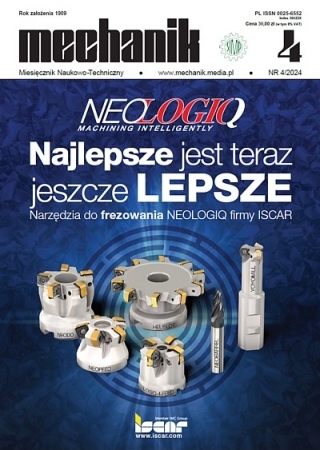

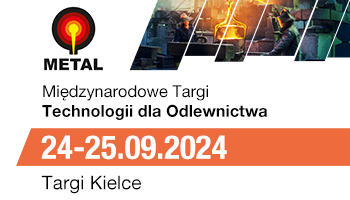

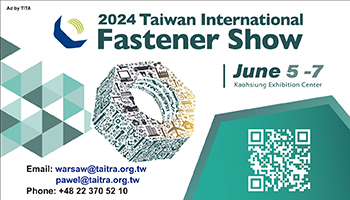
.gif)

